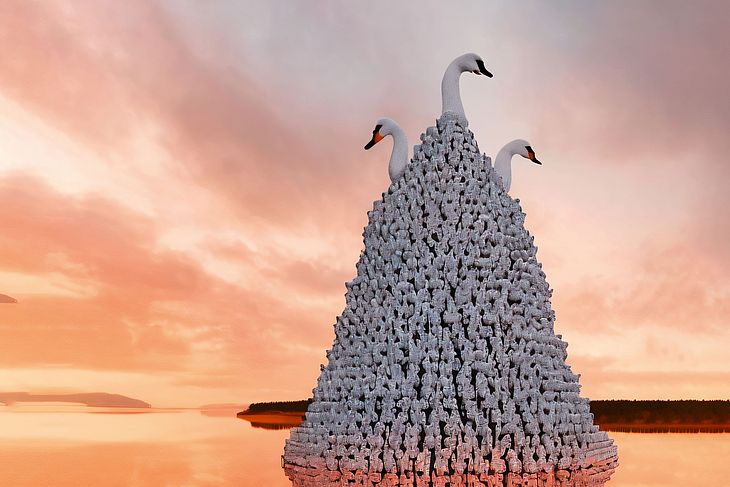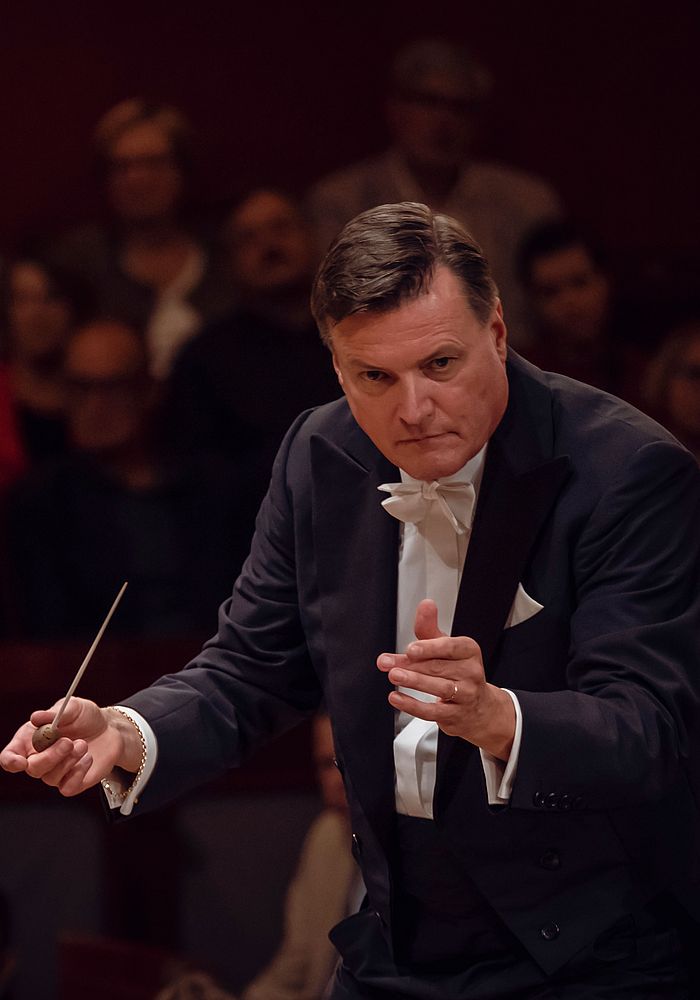Lohengrin is the last of Richard Wagner’s three great romantic operas, after Der Fliegende Holländer and Tannhäuser. The hero’s forced withdrawal in resignation at the end of the piece foreshadowed the composer’s own exile. Participation in the Dresden May uprisings in 1849 cost Wagner his position as master of music at the royal court in Dresden, and made him a political refugee. Safe from prosecution in Zurich, Wagner entered a long dormant period, during which he speculated on the philosophy of art, and the concept of the Nibelung tetralogy ripened, which would mark his exit from the opera theatre of his day. The world premiere of his »abandoned« last opera, which he had presented fragments of in concert in Dresden in 1848, was made possible in Weimar in 1850 by his friend Franz Liszt, who curated the work in the absence of thepursuedcomposer.Whilethe world premiere attracted more incomprehension and criticism than understanding, this opera with its wealth of melodies and martial airs became the decisive factor in bringing the composer to broader audiences during the last quarter of the 19th century.
Wagner’s Lohengrin, the summit of artistic Romanticism, also offers a glimpse into the abyss of political Romanticism. The narcissism of an entire nation was reflected in the ideal of the enigmatic Knight of the Swan, who hastens to the aid of a threatened virgin and is able to strengthen the unity and defence of the realm against domestic and foreign enemies. His mission fails because the rescued virgin cannot meet the demands of his love, which requires unquestioning devotion. She is troubled by doubt about his purity and demands his name. Failed by the human world, he returns to his tragic isolation.
Wagner has created a canvas for projection here, and rulers and »führer figures« from Ludwig II through to Hitler have seen themselves on this and used its mythical aura to romanticize the role models of the patriarchal bourgeois marriage.
No other Wagner opera has received so much adulation or been the target for so much critical mockery as Lohengrin. One thing is clear – given the internal contradictions of the piece, the theatre is faced with the ultimate challenge of developing a penetrating and sensitive deconstruction of its role models and conflict structures. The culture of doubt, rejected and demonized in the piece and personified in the figure of the pagan witch, Ortrud, is the only thing suitable today for Wagner’s epochal and at the same time deeply suspect art. The »amplification, realization and specification of the mythically remote«, entirely in the sense of Thomas Mann’s quote here, are design strategies which the theatrical art of Wieler, Morabito and Viebrock is measured against. They have immersed themselves in the fine network of fairy tale and myth which Wagner’s eclecticist Lohengrin myth is rooted in. In the process, they found a folk tale which begins, »Once upon a time there was a king who died, leaving two children, a son and a daughter. The daughter was a year older than the son. One day, the two children were arguing over who should be the king, as the brother said, ›I’m a prince, and if there are princes around, princesses don’t get to rule.‹
The daughter countered, ›I’m the first born and oldest, I have priority.‹
Folklore research has uncovered innumerable variants of this story. Mostly, the rivalry leads to the brother killing his sister; in several cases, however, the older sister murders her younger brother in rebellion against the Salic law that only males could succeed as kings. Because it is this unspoken and suppressed conflict which drives the opera’s plot. Elsa is the firstborn daughter of the Duke of Brabant, but as a woman is excluded from succeeding to the throne, in favour of her younger brother, Gottfried. In addition, she is to be forcibly married to her guardian, Telramund, in the interests of maintaining the patriarchal power structure. Good and bad reasons enough to liberate herself from her assigned humiliating gender role by an act of violence. And that Wagner’s Lohengrin story gave rise to a deeply ambivalent sibling love varying between love and hate was identified in the first psychoanalytic lectures by Otto Rank in 1911.

